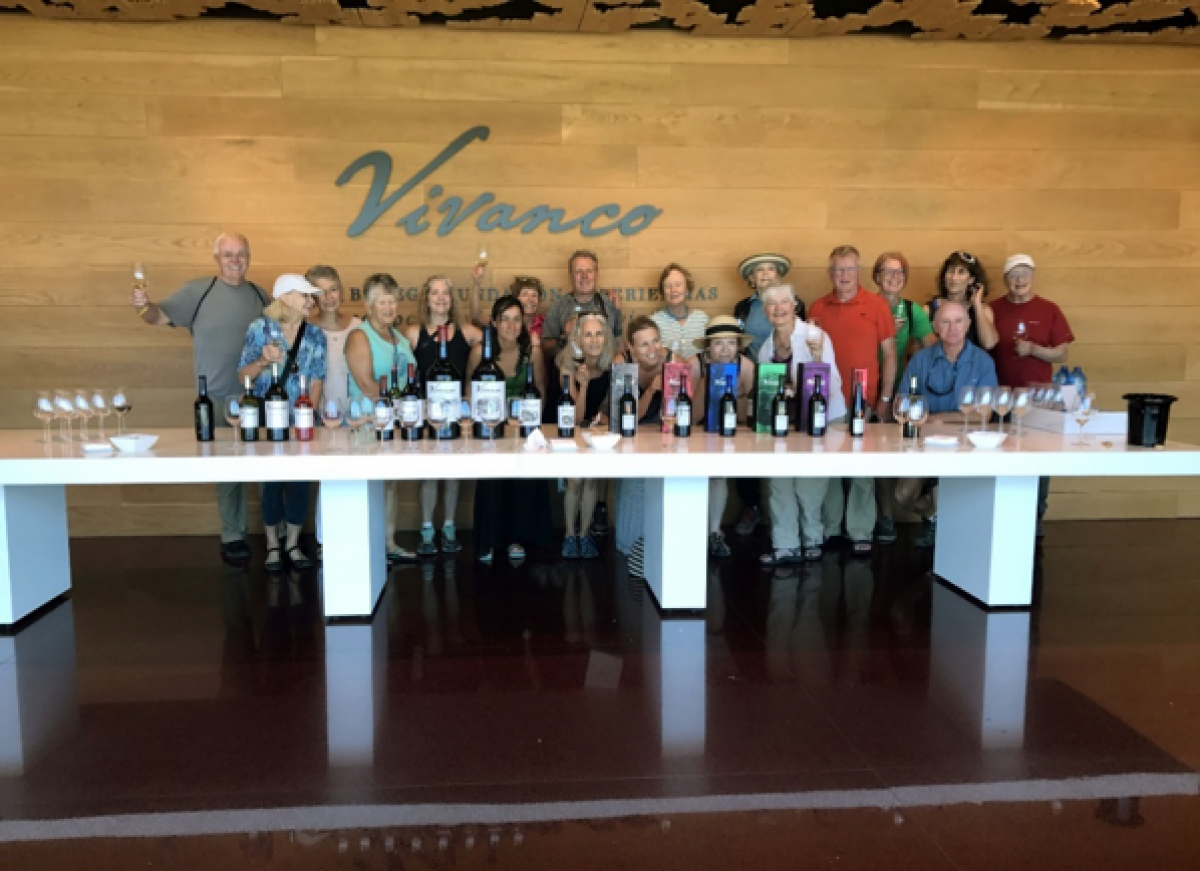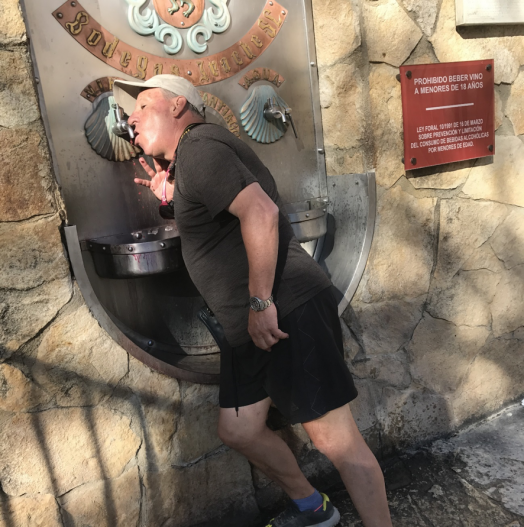
Wine culture on the Camino de Santiago: La Rioja and Navarra
Each stage of the Camino de Santiago has its own idiosyncrasies, and pilgrims learn about them along with the culture, history, gastronomy and art. Our recently launched tour, from Roncesvalles to Burgos, the first part of the French Way to Santiago, crosses La Rioja and Navarra, two of the most internationally renowned wine production areas in Spain. The Way to Compostela in these regions has always been known for the quality of their local wines, even mentioned in the XII century Codex Calixtinus, the oldest pilgrim guide to Santiago as “land of good bread and optimal wine”.
We make two stops along on the Way to taste some of the wine culture that has been part of the Camino since time immemorial: The Vivanco Wine Culture Museum and winery and the Irache water and wine fountain.

Our CEO, Juan Carlos, following pilgrim traditions at the Irache wine fountain.
As we approach the town of Allegui in Navarra, we find something extraordinary, almost magical on the Way, sometimes believed to be a legend, but true: a wine fountain on the walls of Irache winery where pilgrims are welcome to serve themselves a free glass of wine. The original vineyards that feed the fountain date back to a XI century monastery that was also used as a hospital for pilgrims of St. James Way. The fountain, which also has a water faucet, keeps the hospitality tradition alive, with this generous gesture made by the famous winery in support of tired and thirsty pilgrims to soothe their minds, ease the pain of the journey, and forge bonds between strangers.
While we fill our glasses with the precious gift that comes from the tap, we can read an inscription on the wall that says “Pilgrim: if you want to reach Santiago with strength and vitality, have a sip of this great wine and toast to happiness”. There is another sign on the fountain that encourages pilgrims to drink with moderation from the unsupervised free source of wine and buy the wine if they wish to take it with them. Today, the place is so famous that it even has a web cam pointing at the fountain where pilgrims can be seen in real time.
Our other interesting stop is the Vivanco Museum of Wine Culture, in the medieval town of Briones in La Rioja. What this winery and its museum is difficult to capture on paper, one must see, feel, and live it. The museum was opened in the late 90s to educate and teach about wine as an important aspect of civilization through time. The owners decided to open the wine to the world, breaking down the wine for your senses, ending with a thought-provoking and educational wine tasting.
The museum, with various permanent and temporary exhibition halls has the Garden of Bacchus outside, including a collection of grapevines that boasts more than 220 varieties from around the world.
The history of La Rioja reflects a long and varied winemaking tradition, starting with the first settlers in 1000 BC. In the Middle Ages, pilgrims on their way to Santiago crossed the region and carried back the extraordinary reputation of its wines. Stopping here on our sixth day of the tour, we have a small “celebration of wine” to recreate what has been happening for centuries, a stop to discover the hidden secrets of the Spanish Rioja wine culture.
If you are interested in the wines along the Camino de Santiago you may like this post.